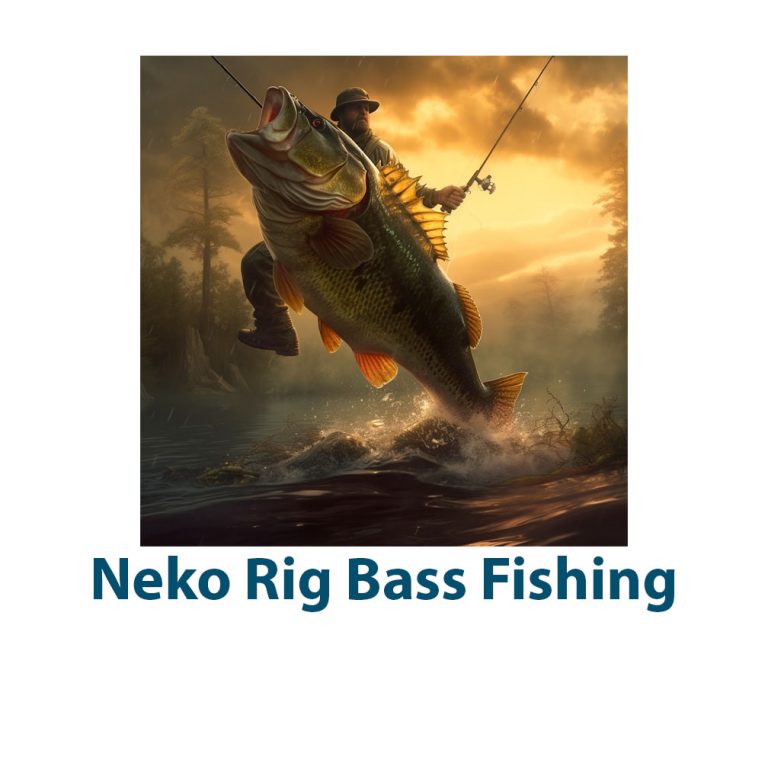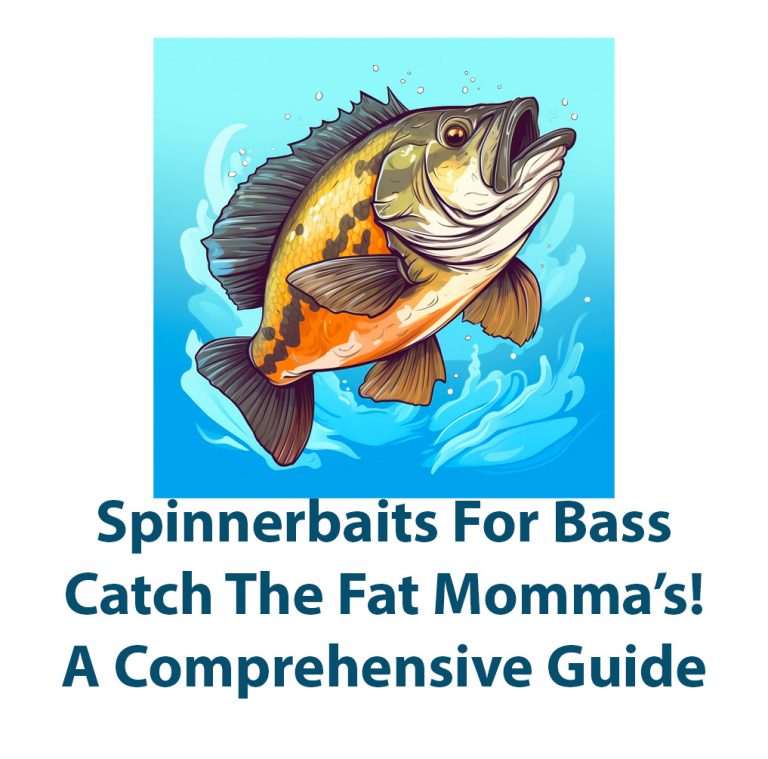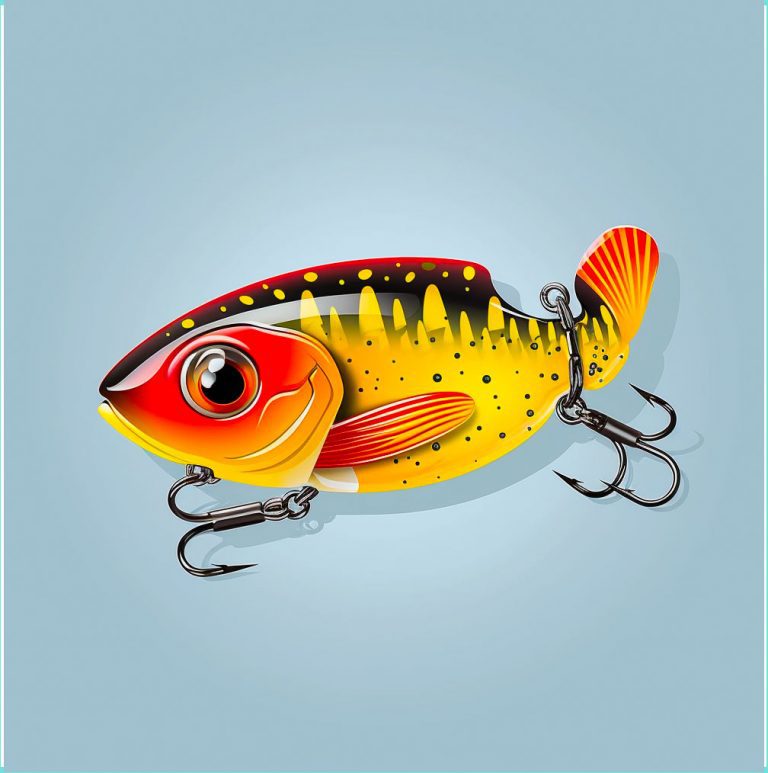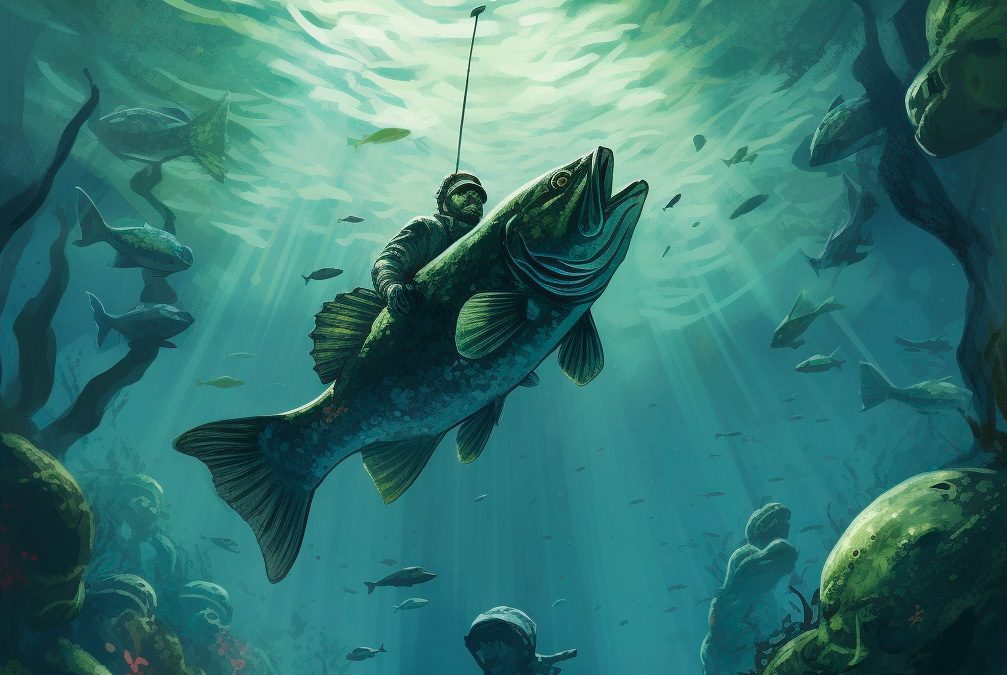Introduction
As a bass angler, I’ve always been intrigued by swim jigs. They’re one of the most talked-about and effective lures in the sport, but there’s something about them that always left me perplexed. What is it about swim jigs that make them so effective? How do you choose the right one for each situation? And most importantly, how do you catch more fish with them?
Through years of trial and error, I’ve finally found some answers to these questions. In this comprehensive guide, I’ll share everything I know about swim jigs, from their anatomy and rigging, to the best gear and tackle to use for them. So, let’s dive in!
Anatomy of A Swim Jig
Before we get into how to rig and fish swim jigs, we first need to go over their anatomy. Swim jigs consist of four main components: the head, skirt, blade, and hook.
The head of a swim jig typically has a sleek design. This helps it to cut through the water with little resistance, making it easier to swim. The weight of the head is also an important factor to consider. Lighter heads are better suited for shallower water, while heavier ones are better for deeper water or strong currents.
Next up is the skirt. Swim jigs usually have a silicone or rubber skirt that imitates the movement of a baitfish’s tail. The skirt also plays a role in the overall presentation, as different colors and styles can mimic different forage species and entice strikes from bass.
Finally, the hook is what connects the lure to your line and secures your catch. Swim jig hooks can have various designs and sizes, but the most important aspect is that it’s sharp and strong enough to penetrate a bass’s mouth and keep it on the line.
How to Rig and Fish A Swim Jig
Now that we know what each component of a swim jig is for, it’s time to learn how to rig and fish it effectively. There are several different ways to rig a swim jig, but the two most common methods are:
- Traditional Method: tie your swim jig to your line, then attach a soft plastic trailer to the hook. The trailer can imitate anything from a crawfish to a shad, and enhances the overall presentation of the lure.
- Trailorless Method: this is the simpler of the two methods, where you tie the swim jig directly to your line without a trailer. This method is best for when you want a more subtle presentation or if the water is really clear.
13 Retrieves For Swim Jigs
When it comes to fishing a swim jig, there are a variety of techniques you can use depending on the water conditions and the behavior of the bass. Here are some of the most effective methods:
I’ve compiled a list of 13 different retrieves that can be used with swim jigs. Some are more basic, while others require a bit more finesse. Keep in mind that certain retrieves may be more effective in certain circumstances, depending on things like water clarity and the type of baitfish in the area. Don’t be afraid to experiment and try different techniques until you find what works best for you.
- The Basic Swim Retrieve
Let’s start with the most straightforward technique: the basic swim retrieve. This is essentially just a steady, consistent retrieve that allows the swim jig to move through the water with a natural swimming motion. It’s a great technique for covering a lot of ground quickly and locating active fish. - The Deadstick Retrieve
Next up is the deadstick retrieve, which involves letting the swim jig sink to the bottom and then pausing for several seconds before resuming your retrieve. This can trigger strikes from fish that are inactive or suspended near the bottom. Be patient with this retrieve, as it can take some time for fish to notice the lure. - The Slow Roll Retrieve
The slow roll retrieve is another technique that requires some patience. As the name suggests, it involves slowly reeling in the swim jig with a consistent, slow pace. This can be particularly effective in cooler water temperatures when fish are less active and prefer a more lethargic prey. - The Stop and Go Retrieve
The stop and go retrieve involves intermittently pausing your retrieve to give the swim jig a more erratic, lifelike movement. This technique can provoke strikes from fish that are actively feeding, as it mimics the behavior of a baitfish that’s trying to escape. - The Yo-Yo Retrieve
Similar to the stop and go retrieve, the yo-yo retrieve involves pausing and jerking the swim jig to create an erratic, darting motion. This technique can be particularly effective on days when fish are more aggressive and looking for a challenge. - The Burn and Kill Retrieve
The burn and kill retrieve is all about speed. Essentially, it involves quickly retrieving the swim jig and then pausing for several seconds before repeating the process. This technique mimics the behavior of a fleeing baitfish and can be very effective in clear water conditions. - The Jerk and Pause Retrieve
Another jerking technique, the jerk and pause retrieve involves quickly jerking the swim jig upward and then pausing for several seconds before repeating. This technique can trigger strikes from fish that are in pursuit mode and looking for an easy meal. - The Shad Flicker Retrieve
The shad flicker retrieve involves reeling the swim jig in quickly and then briefly “flicking” your rod to create a sudden, erratic movement. This technique can mimic the behavior of a fleeing shad and can be particularly effective in areas with a lot of shad activity. - The Wake Retrieve
The wake retrieve involves reeling in the swim jig at a faster pace and allowing it to create a “wake” on the surface of the water. This technique can mimic the behavior of a fleeing baitfish and can be particularly effective in low light conditions when fish are more likely to be feeding near the surface. - The Glide Retrieve
The glide retrieve involves using a zig-zag motion to create a more lifelike swimming motion. Essentially, you’re reeling the swim jig in with a series of stop-start movements, gradually moving it from side to side. This technique can be effective in areas where fish are more skittish and less likely to bite. - The Helicopter Retrieve
The helicopter retrieve is a bit of a mix between the yo-yo and jerk and pause retrieves. Essentially, it involves jerking the swim jig upward and then allowing it to spin in the air before continuing with your retrieve. This technique can be effective in heavily vegetated areas where fish are more likely to be hiding and striking from below. - The Twitch and Pause Retrieve
The twitch and pause retrieve involves using quick, jerky movements to create a more erratic swimming motion. Essentially, you’re twitching your rod to create sudden, unpredictable movements before pausing and resuming your retrieve. This can mimic the behavior of an injured or dying baitfish and can be very effective in high-pressure areas where fish are more wary. - The Sonar Retrieve
Finally, there’s the sonar retrieve. This involves using a series of irregular movements to mimic the sound and movement patterns of sonar technology. Essentially, you’re creating a combination of quick jerks, pauses, and zig-zag movements that can mimic the behavior of a school of fleeing baitfish. This technique can be very effective in areas where fish are highly pressured and less likely to bite on more traditional techniques.
So, there you have it! 13 different retrieves to try out with your swim jig. Remember, the key to successful fishing is to stay flexible and willing to try new things. Don’t hesitate to mix and match techniques until you find what works best for you. Good luck out there on the water!
Matching the Hatch: Choosing the Right Swim Jig for the Environment
One of the most important factors in using swim jigs effectively is choosing the right one for the environment you’re fishing in. Matching the hatch is key to enticing bites from bass, as it imitates the type of forage they’re feeding on.
For example, if you’re fishing in a lake with a lot of shad, you’ll want a swim jig with a white or silver skirt to imitate their color. Conversely, if you’re fishing in a lake with a lot of crawfish, a brown or orange skirt would be more effective.
Water clarity also plays a role in choosing the right swim jig. In clear water, you’ll want a more subtle presentation with a smaller swim jig and possibly a natural color skirt. In murky water, a larger swim jig with a brighter, more vibrant skirt will be more effective in catching the bass’s attention.
Finally, the season can also dictate which swim jig you should use. In the spring, when bass are spawning and protecting their nests, a black and blue swim jig with a crawfish trailer can be effective. In the summer, when the water is warmer, a white or chartreuse swim jig with a paddle tail trailer can mimic shad and entice aggressive bites.
Swim Jig Trailers
One of the most important parts of a swim jig is the trailer. Swim jig trailers add extra motion to the lure and can make it look more like a live baitfish. There are several types of trailers to choose from, including paddle tails, crawfish, and grub tails.
When choosing a trailer, it’s important to consider the size and color of both the swim jig and the trailer. The trailer should also match the type of forage in the body of water you’re fishing in. For example, if you’re fishing in a lake with a lot of crawfish, a crawfish trailer would be the most effective.
Adding a trailer to a swim jig is simple and can be done by threading it onto the hook of the jig.
Swim Jigs For Bass By Season
If you’re an avid angler, you know the importance of selecting the right bait for the fish you’re after. And when targeting bass, swim jigs are definitely worth considering. With a realistic baitfish presentation and versatile retrieve techniques, swim jigs can be effective at any time of year.
However, the seasons have a big impact on bass behavior and feeding patterns, so it’s important to adjust your approach accordingly. In this article, I’ll go over the different factors to consider when selecting swim jigs for each season and offer some tips for a successful fishing trip.
Winter Swim Jigs for Bass
Winter can be a tough time for bass fishing. The colder water temperatures mean that bass are less active and their metabolism slows down, so they’re not as likely to strike aggressively. However, with the right approach, swim jigs can still be effective.
One of the most important considerations is water temperature and depth. In the winter, bass tend to move to deeper water where the temperature is more stable. Look for areas with structure such as drop-offs, ledges, and rocky shorelines.
A slow, steady retrieve with a finesse style swim jig can be effective in these conditions. Choose a bait that closely resembles the smaller baitfish that bass typically feed on in the winter.
Pre Spawn Swim Jigs for Bass
As spring approaches and water temperatures begin to rise, bass start moving to shallower waters in preparation for spawning season. During the pre spawn period, swim jigs can be a great choice for targeting fish in transition.
Again, water temperature and depth are key considerations. Look for areas with shallow water adjacent to deeper water, such as flats adjacent to drop-offs. In terms of bait, try using a larger swim jig that mimics the larger baitfish that bass feed on during this time. Retrieves can be a bit faster to imitate a fleeing baitfish.
Spawn Swim Jigs for Bass
During the spawn, bass move into shallower areas such as coves, pockets, and shorelines to spawn. However, during this period, bass are often more focused on guarding their territory and eggs than actively feeding. Swim jigs can still be effective, but you may need to adjust your approach.
In terms of water temperature and depth, look for areas with shallow water and plenty of cover such as weeds, logs, and brush piles. A slower, more finesse retrieve can be effective in these conditions. Choose a swim jig with a smaller profile to imitate the smaller baitfish that bass feed on during the spawn.
Post Spawn Swim Jigs for Bass
After spawning season is over, bass will often move to deeper waters to recover from the stress of the spawn. However, they’ll still be looking to feed as they regain their strength. Swim jigs can be an effective choice during this period.
Similar to winter fishing, look for areas with structure and depth. Choose a swim jig that mimics the baitfish that bass typically feed on in the post spawn period. A slow, steady retrieve can be effective, but try varying your retrieve speed and retrieve style to find what works best.
Summer Swim Jigs for Bass
Summer is a time of abundance in many bodies of water. With warmer water temperatures, bass become more active and start chasing baitfish more aggressively. Swim jigs can be a great bait for imitating fleeing baitfish during this period.
In terms of water temperature and depth, look for areas with cover such as weeds and submerged timber. Choose a swim jig with a larger profile to imitate the larger baitfish that bass feed on during the warmer months. Vary your retrieve speed and style to find what works best, and don’t be afraid to experiment with different colors and blade combinations.
Fall Swim Jigs for Bass
As the water starts to cool down in the fall, bass start moving back to deeper waters where the temperature is more stable. However, they’ll still be looking to feed as they prepare for the rigors of winter. Swim jigs can be a great choice for imitating the baitfish that bass feed on during this period.
In terms of water temperature and depth, look for areas with cover such as submerged vegetation and rocky shorelines. Choose a swim jig that mimics the baitfish that bass typically feed on in the fall. Retrieves can be varied to find what works best, but a slower, more finesse retrieve can be particularly effective.
Common Mistakes to Avoid
While swim jigs can be highly effective, there are some common mistakes that it’s important to avoid.
One mistake is overworking the bait. Remember, swim jigs are designed to imitate the swimming motion of baitfish, so a slow, steady retrieve is often more effective than a fast, erratic retrieve.
Another mistake is ignoring seasonal considerations. As we discussed earlier, the seasons have a big impact on bass behavior and feeding patterns, so it’s important to adjust your approach accordingly.
Finally, using inappropriate gear and tackle can also be a mistake. Swim jigs are typically used with spinning rods and reels, and choosing the right line and jig weight is important for achieving the right bait action.
Conclusion
In conclusion, swim jigs can be a highly effective bait for catching bass in any season. By considering factors such as water temperature and depth, bait selection, and retrieve techniques, you can increase your chances of success. And remember, don’t be afraid to experiment to find what works best for you. Happy fishing!
Swim Jig Modification Tips for Better Results
Sometimes, a simple modification to your swim jig can make all the difference in catching more fish. Here are a few tips on how to modify your swim jig for the best results:
Add scent: using scent on your swim jig can help attract fish and increase the catch rate. There are several types of scent available, including crawfish, shad, and even garlic.
Modify the skirt: if the water seems to be really clear and the fish are being finicky, try modifying your skirt to add more
visibility. This can be done by adding a few strands of a brighter color to the skirt, or by using a brighter colored skirt altogether.
Make it weedless: if you’re fishing in an area with a lot of snags and weeds, modifying your swim jig to make it weedless can save you a lot of frustration. This can be done by adding a weed guard or bent hook.
Swim Jig Gear and Tackle
Having the right gear and tackle when fishing a swim jig is crucial to getting the most out of your lure. Here are some tips on what to look for:
Rod: a medium-heavy rod with a fast action is recommended for swim jigs. This will give you the sensitivity to feel the lure and the power to set the hook on a big bass.
Reel: a low profile baitcasting reel with a high gear ratio (7:1 or higher) is ideal for swim jigs. This will allow you to retrieve the lure quickly and with minimal effort.
Line: fluorocarbon line is the best choice for swim jigs, as it has low visibility and is less likely to stretch than mono. 12-15 pound test line is usually sufficient, but adjust based on the water conditions and the size of the fish you’re targeting.
Conclusion
Swim jigs can be a highly effective lure in catching bass, but they can also be perplexing to use and choose. By understanding their anatomy, rigging and fishing methods, and choosing the right swim jig for each environment, you can increase your chances of catching more fish. Experiment with different techniques and modifications, and don’t be afraid to try new things to find what works best for you. Good luck on your next fishing trip!

Chatterbaits In Every Season For Bass
When it comes to bass fishing, we all know that having the right gear and techniques can make a huge difference in your success. That’s where chatterbaits come in. These versatile lures are effective in all seasons, from winter to fall. But how do you know which ones to use and when? As an avid […]

Catch Bass In Every Season With Neko Rigs
Introduction I’ve been an avid bass fisherman for years, but it wasn’t until I started using the Neko Rig that I truly started catching bass in every season. Whether it’s winter, pre-spawn, spawn, post-spawn, summer or fall, the Neko Rig has proven to be a highly effective tool for catching bass. In this article, I’m […]

Spinnerbaits For Bass: Catch The Big Momma’s!
Greetings, fellow fisherman. Today, I want to discuss the spinnerbait, which is a crucial piece of equipment for any bass fisherman. This article is for you if you want to expand your toolkit with a new technique or if you want to try spinnerbaits for the first time. I can vouch for the adaptability and […]

Chatterbait Fishing For Bass
Introduction Using a Chatterbait should be high on your list of options if you’re a fisher seeking for a novel and interesting technique to catch bass. One of the most adaptable and successful lures for bass fishing is the chatterbait. They deliver amazing results and are quite simple to use. I’ll be sharing my advice […]

Lipless Crankbaits for Bass: Find Bass Fast
Introduction This article is going to look at fishing lipless crankbaits for bass. Fishing can be a rewarding and relaxing pastime, but let’s face it, catching fish is the main goal. Bass fishing, in particular, can be a challenge. You need to find where the fish are hiding, and then convince them to bite. And […]

Jerkbaits For Largemouth, Smallmouth and Spotted Bass
Have you ever heard of a jerkbait? If you’re an avid bass fisherman, chances are you have. But if you’re not quite sure what a jerkbait is or how to use it, don’t worry. I was in the same boat (or should I say, fishing boat) as you not too long ago. However, I have […]

